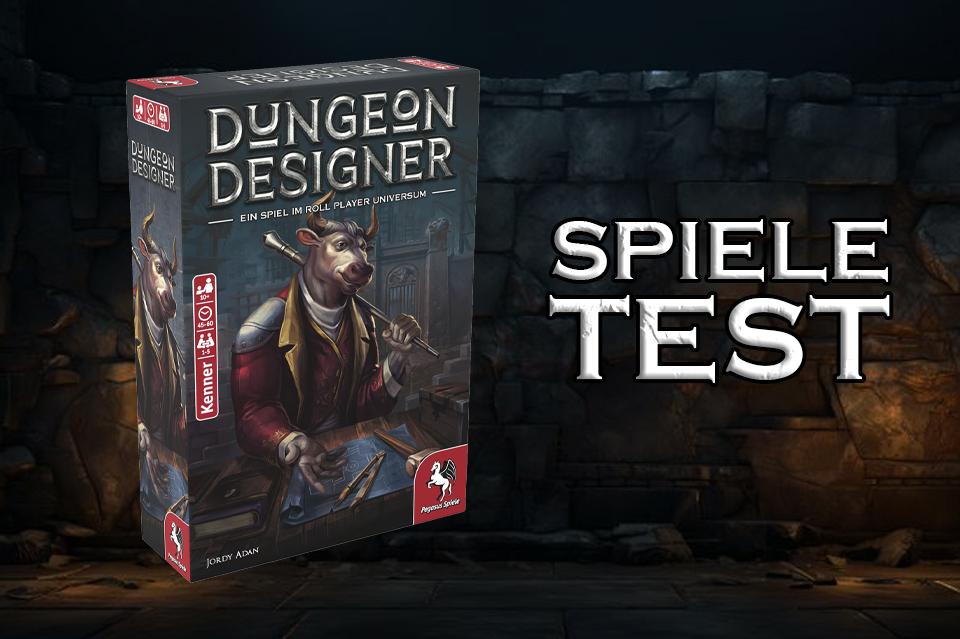
Winding corridors, mythical creatures and dangerous traps – that sounds like a real dungeon. And the best thing is: with Dungeon Designer from Pegasus, you can create it yourself!
We were curious about the new connoisseur game and took a close look at it.game principle Dungeon Designer is based on each player building a complex and content-rich dungeon according to the task. Points are awarded at the end of the evaluation for fulfilled requirements, which are called “reputation”. The entire game spans four construction years in which you create your dungeon. Each year in turn is divided into three phases (building, improving, cleaning up). Whoever builds cleverly and acts strategically will score the most points at the end of the game. Instructions & game set-up The enclosed booklet is richly illustrated and all rules are sufficiently explained. Nevertheless, the thickness of the booklet is limited. We thought that was good, because it meant we could move on to playing more quickly. Setting up the game was also very easy thanks to the pictures and explanations. There are lots of room cards that you can use to build your dungeon, some task and objective cards, construction plans and so on. The game material is supplemented by tiles, markers, dungeon frames and a game board. A mini-expansion is also included, which you can use to add to your game. Gameplay Once you have determined a ranking, the first construction phase begins. To do this, draw five room cards. Now start laying out the top row of your dungeon frame with cards one after the other. It is a good idea to pay attention to the construction plan so that your path network is connected to the entrance and the right cards are in the right places. After all, every correct placement earns you important points at the end. After everyone has played a card, the cards are passed to the next player in turn. This is how you get new parts for your dungeon. If the top row is occupied, phase 2, the improvement, begins. Using the gold values on your cards and the treasure chests in the rooms you have placed, you can now determine your wealth and purchase items for the dungeon from the market stalls on display. If you can’t or don’t want to afford anything (anymore), you pass, hand in your gold and may choose a task card. But beware: whoever has to pass last is first in the ranking for the next round. This is where things start to get strategic. After improving, you finally tidy up and prepare new task cards and market stalls and draw new room cards. You play through these three phases a total of four times, except for minor changes – then your construction project is complete and the dungeon can be evaluated. Conclusion Dungeon Designer is a connoisseur game that is absolutely suitable for families with its age recommendation from 10 years. The rules are easy to understand and the strategic elements make the game entertaining and exciting. For those who want to play alone, there is also a solo mode, which makes the game even more versatile. We recommend Dungeon Designer for fans of fantasy and family strategy games.

